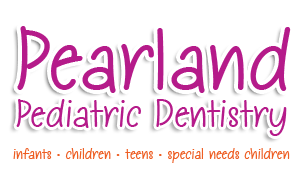There’s an App for That!
May 27th, 2020

Kids today are more tech-savvy than ever before. Even young children use computers, tablets and smart phones to make learning about their world more accessible and more enjoyable. And with the enormous variety of apps geared to childhood education, it comes as no surprise that you can download an app to encourage your children to learn about—and celebrate—their dental health.
What kinds of apps are available for your child?
Happy Brushing!
Children’s apps can offer helpful advice for learning effective brushing and flossing habits that will last a lifetime. Some of the apps for young brushers include:
- Age appropriate instructions for proper brushing technique
- Two minutes of carefully chosen songs or stories to keep them brushing the recommended amount of time in an entertaining way
- Reminders to replace those little toothbrushes—every three months, please!
- Educational games and stories to teach effective dental habits and tooth-healthy food choices.
The best apps not only provide lots of important information for keeping young teeth and gums their healthiest, but make learning fun with rewards such as badges, stars, games, or simply plenty of positive encouragement.
Time for the Tooth Fairy to Appear?
Losing a tooth is an important event for many young children. If you’re a fan of the Tooth Fairy, there are apps that can provide some reassuring fun while your child waits for that first loose tooth to finally come out. Tooth Fairy apps offer a wide variety of activities, including:
- Tooth Fairy voicemails to report a loose or lost tooth
- Tooth Fairy diaries to record lost teeth—and save photos of the adorable smiles that result
- A video of an animated Tooth Fairy fluttering around your child’s pillow on the big night
- A Tooth Fairy alert for forgetful Tooth Fairy assistants.
Apply the Latest in Brushing Technology
If you’ve decided that an electric toothbrush is the best brush for your child, many of the products available today come with their own apps. What can these apps do?
- Let children know if they’ve brushed long enough
- Alert them when they’re brushing too hard, which is not good for young gums and enamel
- Some apps even provide a map of the mouth and teeth that lets children know just where they’ve brushed, in case they tend to neglect a few spots regularly.
Keep Those Appointments
Dr. Pamela Clark and our team are here to help keep your child’s teeth healthy. Regular examinations and professional cleanings at our Pearland, TX office not only make sure problems are caught before they become serious, they can help prevent problems from developing in the first place.
There are many apps out there that are designed to help you keep your child’s dental care on track with appointment reminders. This sounds pretty basic, but when kids have school, sports, lessons, and activities filling their days, it doesn’t hurt to get a timely reminder that Dr. Pamela Clark should be seeing someone in your family for an appointment or checkup and a cleaning in the near future.
Dentist Approved
When looking for a dental app for children, there are lots of options. The best apps provide age-appropriate educational tips for keeping young smiles healthy, and present them in a way that engages your child’s imagination and provides positive reinforcement.
If you think an app might make dental care not only more efficient, but more enjoyable for your child, talk to Dr. Pamela Clark! We might have some suggestions that will be just right for your family.







